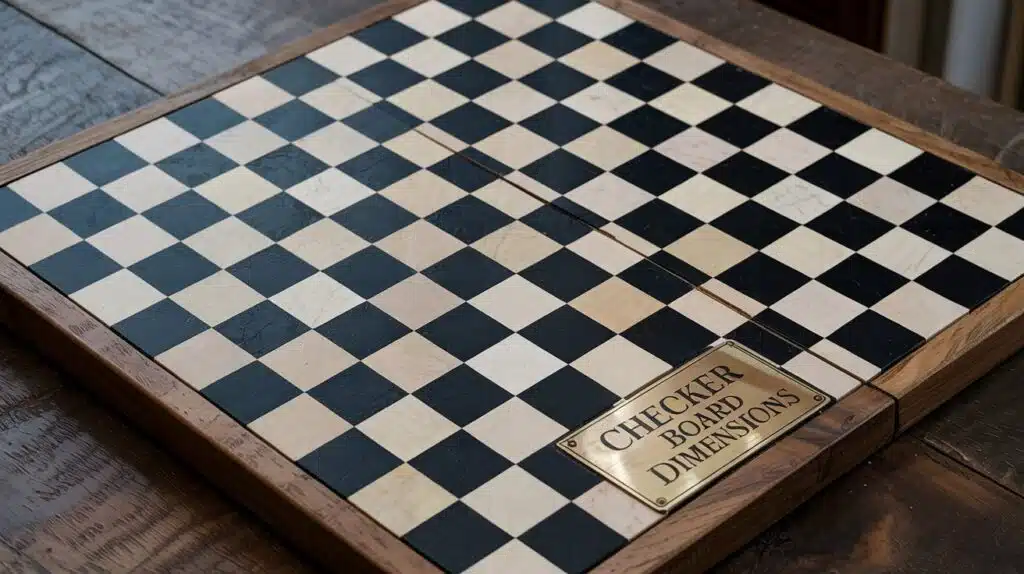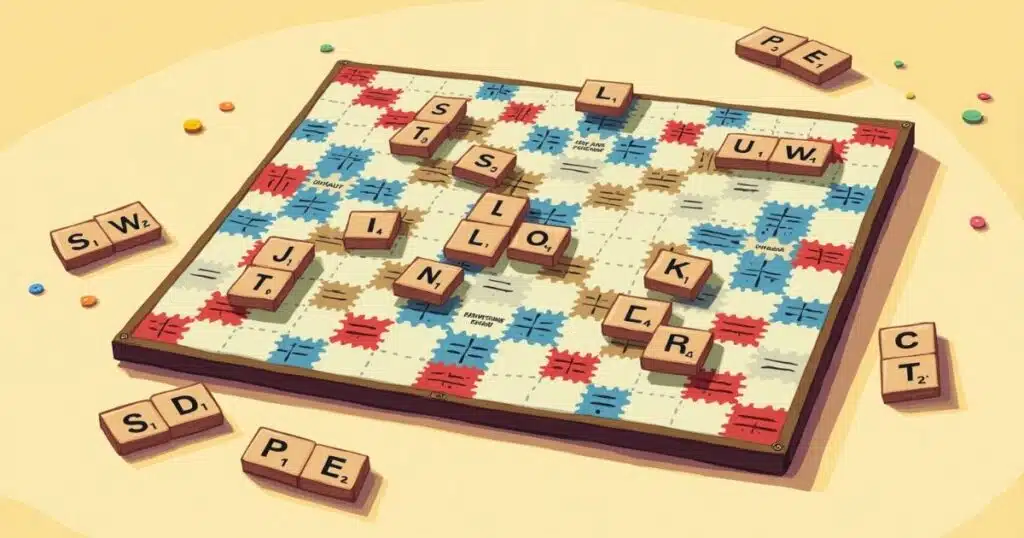Pokemon cards have fascinated collectors and players for decades, but have you ever stopped to really look at the cards themselves? Those colorful rectangles featuring Pikachu and friends aren’t just random dimensions they’re carefully crafted pieces with specific measurements designed for gameplay, collecting, and protection.
Whether you’re a seasoned collector looking to properly store your treasures or a newcomer trying to figure out which sleeves to buy, understanding Pokémon card sizes is more important than you might think.
How Big Are Pokémon Cards?
Pokémon cards measure 2.5 inches (63.5mm) wide by 3.5 inches (88.9mm) tall. This size is comparable to a standard business card, though slightly larger. You can visualize this by placing the card next to your smartphone most modern phones are wider but shorter than a Pokémon card.
This specific size has remained consistent throughout the trading card game’s history, allowing collectors to use standardized protection products across their entire collection.
Standard Pokémon Card Dimensions

The classic Pokémon card’s dimensions weren’t chosen randomly. They follow what’s known in the trading card world as the “standard American card size.” This carefully selected format balances several practical considerations.
Standard Pokémon cards measure precisely 2.5 × 3.5 inches (63.5 × 88.9 mm). This size hits the sweet spot large enough to showcase the artwork and text clearly, yet small enough for children’s hands to hold comfortably during gameplay. The cards are printed on cardstock with a thickness of approximately 0.012 inches (0.3 mm).
The consistency in size hasn’t wavered since the game’s introduction in 1996, making it easier for players to maintain their collections. This standardization means sleeves, top loaders, and binders manufactured decades apart will still fit your entire collection.
Beyond just physical handling, these dimensions allow for optimal layout of the card elements from the illustration box to the attack descriptions and energy symbols. Game designers carefully considered how much information needed to appear on each card while maintaining readability and visual appeal.
Interestingly, while most trading card games have settled on similar dimensions, Pokémon cards are slightly taller than their Magic: The Gathering counterparts, which measure 2.5 × 3.5 inches but use a different corner radius.
Jumbo Pokémon Cards
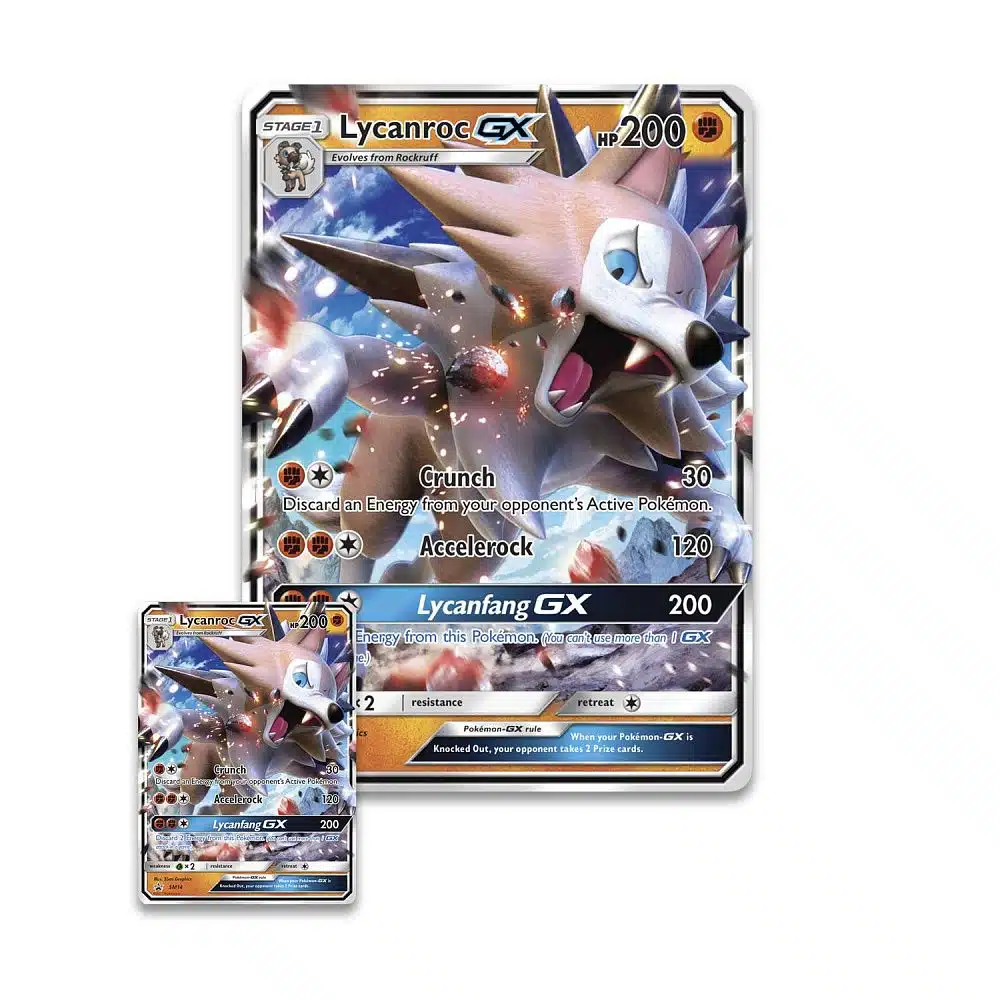
While standard cards dominate most collections, jumbo Pokémon cards make a bold statement with their oversized presence. These eye-catching promotional items tower over their standard counterparts.
Jumbo Pokémon cards typically measure 3.5 × 5 inches (8.9 × 12.7 cm), though some special editions can reach even larger dimensions of 8 × 11 inches (20.3 × 27.9 cm). These cards aren’t meant for regular gameplay but serve as collectible showpieces included in special boxes, collections, or as promotional items.
The Pokémon Company began producing these oversized versions primarily to showcase new or legendary Pokémon in special collections. The larger canvas allows for greater appreciation of the artwork, with more detailed illustrations that might be missed on standard-sized cards.
Finding protection for jumbo cards presents a unique challenge for collectors. While standard cards fit perfectly in common sleeve sizes, jumbo cards require specialized oversized sleeves or display cases. Many collectors opt for custom photo frames or specialty jumbo card holders to display these statement pieces.
Despite their impressive size, jumbo cards contain identical information to their standard counterparts just scaled up proportionally. The text remains readable, and the artwork maintains its integrity, just with greater impact due to the expanded dimensions.
Mini Pokémon Cards
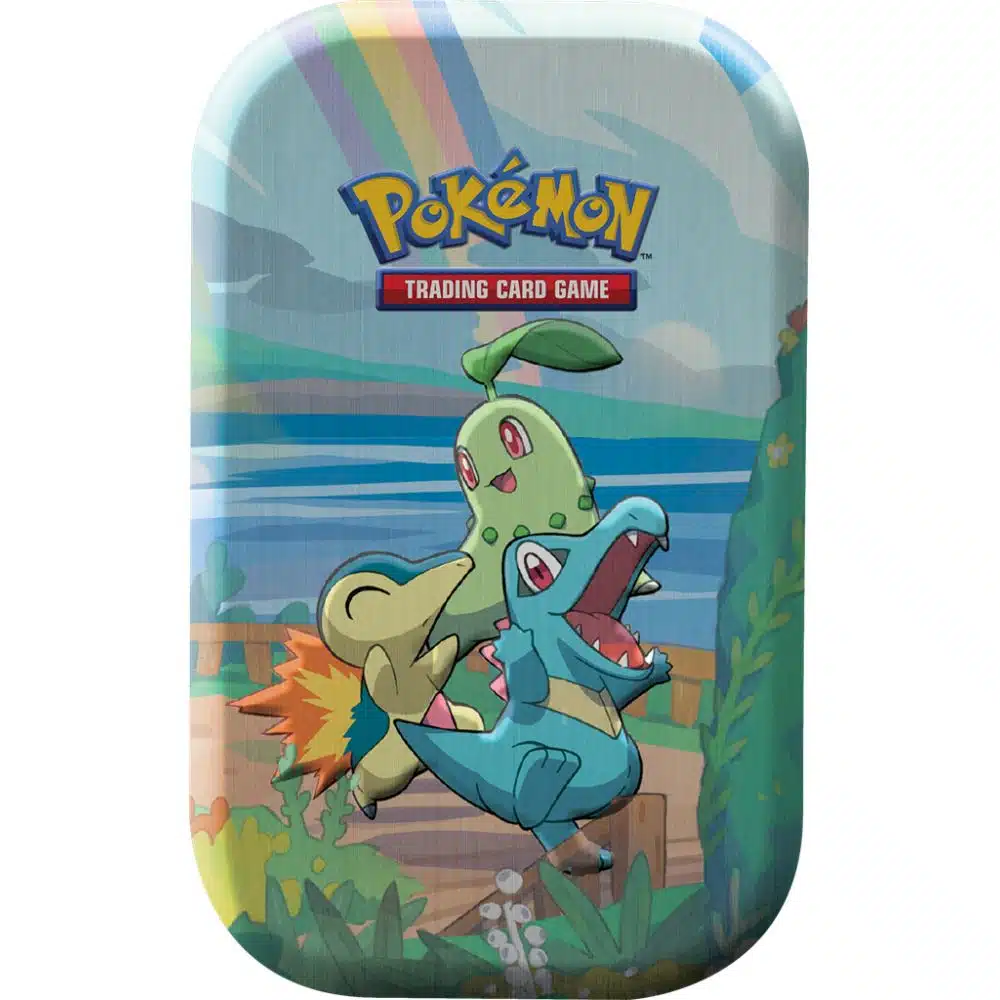
At the opposite end of the spectrum, mini Pokémon cards bring the beloved characters into a palm-sized format perfect for certain collections and promotions.
Mini Pokémon cards typically measure about 1.75 × 2.5 inches (4.4 × 6.3 cm), roughly 70% the size of standard cards. These diminutive versions first gained popularity through the Pokémon Card Game Vending Machine series in Japan during the late 1990s.
The Japanese “Carddass” vending machines dispensed these mini cards as affordable collectibles, often featuring simplified designs compared to their full-sized counterparts. While the artwork remained recognizable, these cards often omitted gameplay elements like attacks or energy requirements.
Despite their small stature, mini cards hold significant appeal for completionist collectors. Their reduced size makes them perfect for travel collections or displays where space comes at a premium. Some collectors even create custom miniature binders specifically designed for these tiny treasures.
In recent years, The Pokémon Company has occasionally revived the mini card format for special promotions, particularly in Asian markets. While not as common as standard or jumbo cards, these miniatures represent an interesting subset of the Pokémon card collecting universe.
Pokémon Card Thickness
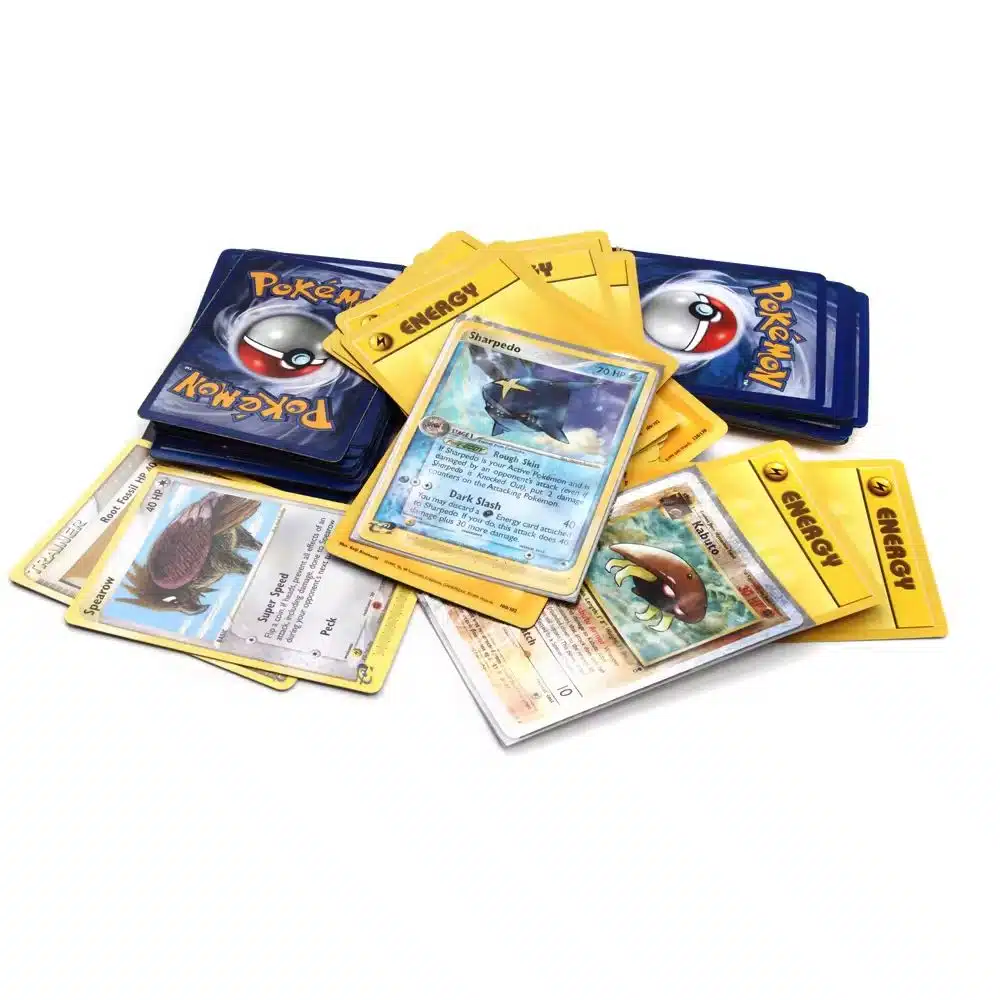
The thickness of Pokémon cards plays a crucial role in their durability and feel during gameplay, yet it’s often overlooked by casual collectors.
Standard Pokémon cards have a thickness of approximately 0.012 inches (0.3 mm). This specific weight provides the perfect balance between sturdiness and flexibility durable enough to withstand shuffling and handling, yet thin enough to easily form a deck.
Card thickness has evolved slightly throughout the decades. Early Pokémon cards from the late 1990s were printed on marginally thinner stock than modern cards. Today’s cards incorporate improved cardstock technology with better core stability and surface treatments for enhanced durability.
The precise thickness matters tremendously when selecting protective gear. Double-sleeving (using an inner perfect-fit sleeve and an outer standard sleeve) requires exact measurements to ensure cards fit without bending. Similarly, top loaders, card savers, and grading submissions all specify card thickness requirements.
Professional grading companies use specialized calipers to measure card thickness as part of their authentication process. Even minor deviations from standard thickness can indicate potential counterfeits or manufacturing anomalies.
For collectors concerned with preservation, understanding card thickness helps when addressing issues like warping. Cards stored in environments with fluctuating humidity may curve slightly, changing their effective thickness and potentially affecting their value.
Card Protection Sizes for Pokémon Cards
Preserving your Pokémon cards requires protective products precisely matched to their dimensions. Let’s explore the various protection options and their measurements.
Standard sleeves for Pokémon cards measure 2.625 × 3.625 inches (66.7 × 92.1 mm), providing that crucial fraction of extra space for easy insertion while keeping the card snug. These sleeves come in various thicknesses, typically ranging from 40 to 100 microns, with higher micron counts offering increased rigidity and protection.
Perfect Fit sleeves measure slightly tighter at approximately 2.52 × 3.54 inches (64 × 89.9 mm). These sleeves are designed to hug the card closely with minimal extra space, making them ideal as inner sleeves in a double-sleeving approach. Their snug fit prevents dust and moisture from reaching the card surface.
Top loaders, the rigid plastic protectors favored for valuable cards, typically measure 2.625 × 3.75 inches (66.7 × 95.3 mm) with various thickness options ranging from 35pt to 180pt. The most common 35pt top loaders work perfectly for standard Pokémon cards.
Card saver semi-rigid holders measure approximately 2.75 × 3.875 inches (69.9 × 98.4 mm) and provide firm protection while being more flexible than top loaders. These are especially popular for submitting cards for professional grading.
For jumbo Pokémon cards, specialized oversized sleeves measuring approximately 4 × 6 inches (101.6 × 152.4 mm) are available, though they can be harder to find than standard protection products.
When storing cards in binders, standard 9-pocket pages are designed with pockets measuring approximately 2.625 × 3.675 inches (66.7 × 93.3 mm), perfectly accommodating sleeved Pokémon cards while keeping them visible and organized.
How Pokémon Card Sizes Compare to Other Trading Cards
Understanding how Pokémon cards measure up against other popular trading cards helps collectors who maintain multiple card game collections.
Pokémon cards (2.5 × 3.5 inches) share identical dimensions with popular trading card games like Yu-Gi-Oh! and Cardfight!! Vanguard. This convenient standardization means protection products can often be used interchangeably across these collections.
Magic: The Gathering cards measure 2.5 × 3.5 inches identical in width and height to Pokémon cards but feature a slightly different corner radius that creates a subtly different profile. Most sleeves designed for either game will work for both, though perfect fit sleeves may highlight these minor differences.
Sports trading cards typically measure 2.5 × 3.5 inches as well, following the American standard card size. This makes storage solutions highly versatile across collecting categories.
Japanese trading cards often follow a slightly different standard, measuring approximately 2.36 × 3.39 inches (59.9 × 86.1 mm). This subtle size difference means Japanese-exclusive Pokémon cards require different sleeves than their international counterparts.
The standardization across major trading card games wasn’t accidental. It developed as the industry recognized the benefits of consistency for both manufacturers and collectors. Production equipment, protection products, and storage solutions all benefit from this compatibility.
For collectors maintaining multiple card game collections, these similarities simplify organization and storage. A binder system purchased for Pokémon cards will generally work perfectly for other standard-sized trading cards.
The Evolution of Pokémon Card Designs
While the physical dimensions of Pokémon cards have remained consistent, the design elements within those 2.5 × 3.5 inches have evolved dramatically over the decades.
The original Base Set cards from 1996-1999 featured a relatively simple layout with a modestly sized illustration box. The card borders were thicker, and the text occupied a larger portion of the card’s real estate. These early designs prioritized gameplay information over artwork.
Beginning with the e-Card series in the early 2000s, Pokémon cards began incorporating technological elements like dot codes that could be scanned by the e-Reader device. These additions required redesigning the card layout while maintaining the standard dimensions.
The EX era (2003-2007) introduced full-art cards that extended the illustration beyond the traditional art box. This design innovation maximized the visual impact within the unchanging card dimensions, using the entire 2.5 × 3.5 inch canvas more effectively.
Modern Pokémon cards, particularly Ultra Rare and Secret Rare variants, push the boundaries of what can be accomplished within the standard card size. Textured surfaces, holographic patterns, and extended artwork create visual complexity that transcends the card’s physical limitations.
Throughout these design evolutions, the text has generally become more condensed and efficient, allowing for more detailed mechanics while preserving or expanding the artwork space. Font sizes and types have been optimized for readability within the confined space.
The most recent innovations include special printing techniques like etched holofoils and rainbow effects that add depth and dimension without changing the card’s physical measurements or thickness.
Practical Tips for Measuring and Identifying Card Sizes
Whether you’re sorting through inherited collections or verifying potential purchases, knowing how to accurately identify and measure card sizes helps ensure authenticity and proper storage.
For quick reference without tools, remember that a standard Pokémon card is approximately the same length as an iPhone 12 or Galaxy S21, though narrower. This provides a handy visual comparison when out collecting.
When precision matters, use a digital caliper for the most accurate measurements. These tools can measure down to 0.01mm, helping identify counterfeit cards that often have subtle dimensional differences from authentic ones.
If you don’t have specialized tools, a standard ruler can suffice. Place the card on a flat surface and measure both dimensions carefully. Remember to measure the actual card, not any sleeves or protectors it might be in.
To distinguish between standard and Japanese variant sizes, compare cards side by side. The Japanese variants will be noticeably smaller when placed directly against international versions.
When identifying jumbo cards, note that they come in various sizes. The most common promotional jumbo cards are approximately 3.5 × 5 inches, but some special editions can be significantly larger.
For collectors dealing with loose cards from various games, create a reference card for each size standard. Keep these reference cards in your collection toolkit for quick comparison when buying or trading.
The Importance of Card Size in Competitive Play
The standardized dimensions of Pokémon cards aren’t just about consistency for collectors they’re crucial for tournament play and fair competition.
Official Pokémon tournaments have strict rules regarding card alterations that might affect size or thickness. Cards that have been trimmed, bent, or otherwise modified from their original dimensions are typically prohibited from tournament play.
Card sleeves used in official competitions must maintain transparency and can’t add excessive thickness that might make cards distinguishable from one another. The Pokémon Company International’s tournament regulations specify maximum sleeve thickness to ensure no player gains an unfair advantage.
The standard 2.5 × 3.5 inch size facilitates proper shuffling techniques. Professional players develop shuffling methods specifically optimized for these dimensions, allowing for thorough randomization without damaging the cards.
When cards become worn at the edges or corners, their effective dimensions change slightly. Tournament judges may require players to replace cards that have become distinguishable by size due to wear and tear, as this could provide unfair information during gameplay.
Counterfeit cards often have subtle size differences that tournament officials are trained to identify. Even discrepancies of 0.5mm can be grounds for disqualification if detected during deck checks.
The standardized size also influences gameplay ergonomics how players physically interact with their cards. The dimensions allow for comfortable holding of a hand of cards and efficient placement on playing surfaces.
Conclusion: Why Pokémon Card Dimensions Matter
Understanding the precise measurements of Pokémon cards 2.5 × 3.5 inches for standard cards impacts every aspect of collecting and playing this beloved trading card game.
For serious collectors, knowing exact dimensions ensures proper protection and preservation. The right sleeves, top loaders, and storage solutions depend on accurate size knowledge, potentially preserving thousands of dollars in value for rare cards.
For players, standardized card sizes guarantee fair competition and consistent gameplay experiences. From shuffling to drawing to playing cards on the table, every physical interaction with the game relies on these consistent dimensions.
Parents and gift-givers benefit from understanding card sizes when purchasing accessories for young collectors. Knowing whether to buy standard sleeves or jumbo protection can make the difference between a useful gift and a frustrating mismatch.
Next time you hold a Pokémon card, take a moment to appreciate the careful design considerations that went into those seemingly simple dimensions. That 2.5 × 3.5 inch rectangle represents decades of gaming tradition and collecting passion, all packed into a perfectly pocket-sized format.
Look around your home how many items can you find that match the dimensions of a Pokémon card? From business cards to small photo prints, you might be surprised how this standardized size appears throughout your daily life.
Read more knowledgeable blogs on Measure Take.


